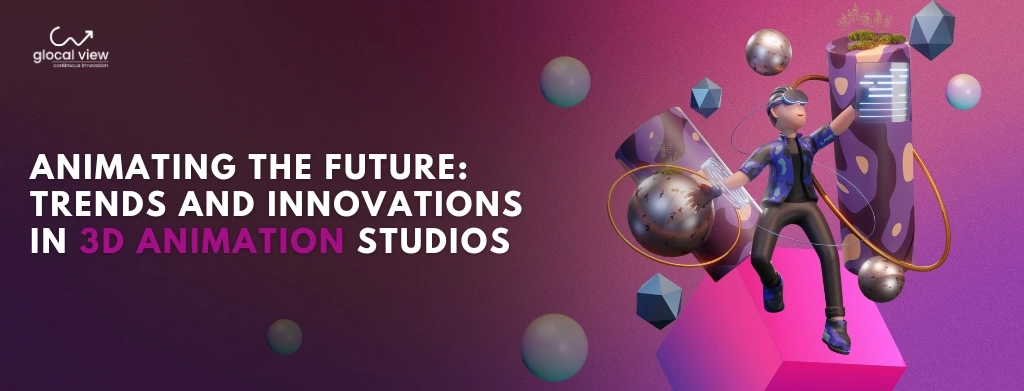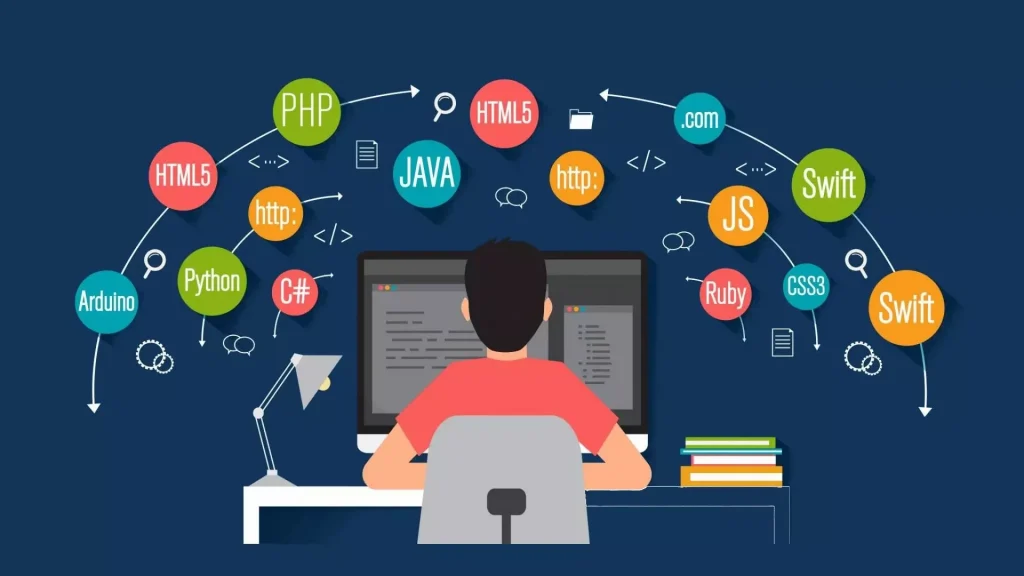
The 3D animation Studios lead the way around visual storytelling, transforming how we perceive and engage with media. With its profound impact felt across various platforms, from groundbreaking video games to blockbuster films, 3D animation companies captivate audiences and unlock endless possibilities for artistic expression.
This introduction provides a concise yet comprehensive overview of the 3D animation industry, underscoring its pivotal role in today’s dynamic media landscape. Understanding the rich history and evolution of the 3D animation business becomes essential as we embark on a thrilling journey through the technologies and trends that will shape the future of these studios. Join us as we unravel this digital tapestry, exploring the narrative prowess, technological advancements, and remarkable artistic talent that define the realm of 3D animation.
Evolution of 3D Animation Studios
The incredible journey of 3D animation has been a captivating tale, characterized by remarkable technological advancements, engaging storytelling, and the rise of renowned animation studios. Let’s delve into the early days and subsequent evolution of 3D animation studios:
The Beginnings of 3D Animation:
1960s-1970s: The Emergence of Computer Graphics:
- The origins of 3D animation date back to the 1960s when the field of computer graphics began to take shape.
- Esteemed pioneers such as Ivan Sutherland and his student Edwin Catmull laid the foundations for computer-generated imagery (CGI).
1980s: The Breakthrough of CGI in Films:
- The first significant utilization of CGI in a feature film occurred in the groundbreaking film “Tron” (1982), where computer-generated environments seamlessly merged with live-action footage.
- Influential to the 3D animation industry, Pixar was established in 1986 by Edwin Catmull and Alvy Ray Smith as the Graphics Group, initially a subsidiary of Lucasfilm.
Technological Milestones:
1980s-1990s: Pixar’s Ascendancy and the Emergence of RenderMan:
During this period, Pixar focused on creating groundbreaking short films and commercials that highlighted the immense potential of 3D animation Studios in Norway. Furthermore, they developed RenderMan, a rendering software that rapidly became an industry standard due to its ability to produce increasingly realistic and intricate graphics.
1995: Toy Story – Pioneering the First Feature-Length 3D Animated Film:
In a monumental achievement, Pixar released “Toy Story,” the world’s first entirely computer-animated feature film. This groundbreaking production revolutionized the animation domain and established the foundation for the unprecedented prevalence of 3D animation in the industry.
Late 1990s-2000s: The Emergence of Alternative Studios:
The entry of DreamWorks Animation into the industry during this period marked a significant milestone. Films like “Shrek” (2001) demonstrated their utilization of advanced technology, resulting in visually stunning and commercially successful animated movies. Concurrently, Pixar’s impact continued to solidify with the releases of “Monsters, Inc.” (2001) and “Finding Nemo” (2003), reaffirming their position as an unrivalled force in the animation realm.
2009: Avatar and the Amazing Breakthrough in 3D Stereoscopic Technology
Back in 2009, there was a mind-blowing leap forward in the world of 3D stereoscopic technology thanks to James Cameron’s extraordinary film, “Avatar.” This movie wasn’t just another run-of-the-mill 3D flick, oh no! It pushed the boundaries of what we thought was possible and completely transformed the way we experienced movies. The impact was so huge that it garnered widespread praise and left an everlasting mark on the entire film industry.
Contemporary Developments:
Improvements in Animation Software:
The continuous progress in animation software, such as Autodesk Maya and Blender, has given animators more powerful tools and greater flexibility to work with.
Realism and Simulation:
Breakthroughs in simulation technology have made it possible to create more lifelike animations, particularly in areas like realistic fluid movements, accurate cloth simulations, and detailed hair rendering.
Virtual Reality (VR) and Augmented Reality (AR):
The exploration of VR and AR technologies has opened up new horizons for immersive storytelling and interactive experiences in 3D animation Studios, making it even more exciting.
Streaming Platforms and Original Content:
The emergence of popular streaming platforms like Netflix, Disney+, and others has created a higher demand for original animated content. This trend has brought fresh opportunities to 3D animation studios to showcase their creativity and captivate a wider audience.
Trends in 3D Animation Studios

1. Improved Realism with Advanced Rendering Techniques:
Ray Tracing:
Achieving lifelike Lighting and Reflections: Thanks to the enhanced accessibility of ray tracing technology, animators can now create 3D scenes that boast incredibly realistic lighting, shadows, and reflections.Physically Based Rendering (PBR):
Authentic Material Realism: PBR enables the simulation of how materials truly interact with light in the real world. This results in animations that feature more accurate and visually convincing textures.Global Illumination:
Natural Propagation of Light: By utilizing global illumination techniques, the accuracy of lighting in 3D animation Studios in Norway is significantly improved. This allows for the creation of more immersive environments that feel incredibly natural.2. Virtual Reality (VR) and Augmented Reality (AR) Integration in 3D Animation
VR Film Experiences:
Want to dive into a whole new dimension of film? Virtual Reality (VR) is revolutionizing 3D animation by creating immersive film experiences. With VR, viewers can enter the animated worlds and actively engage with the storyline, making it an unforgettable adventure.AR Applications:
Augmented Reality (AR) is turning heads in marketing campaigns, educational content, and mobile apps thanks to its interactive capabilities. By superimposing 3D animations into the real world, AR allows for a whole new level of engagement. Say goodbye to traditional marketing and educational experiences, and hello to exciting, interactive encounters.3. Advancements in Motion Capture for Realistic Character Movements
Facial Motion Capture:
Expressive Characters: With advanced facial motion capture technology, we can now capture even the most subtle facial expressions, adding an incredible depth of emotion and realism to animated characters.Full-Body Motion Capture:
Natural Movements: The continuous improvements in full-body motion capture have led to more seamless and lifelike character animations, making their movements appear effortlessly natural and realistic.4. Advancements in Animation Production with AI and GANs
Procedural Animation:
Simplified Animation Techniques: AI is revolutionizing animation production by automating certain aspects of the pipeline, saving valuable time.Style Transfer Using GANs:
Unleashing Artistic Adaptability: GANs are empowering animators to apply the visually captivating styles of one image or video onto another, leading to unparalleled and imaginative outcomes.AI-Enabled Animation Tools:
Boosting Efficiency and Creativity: AI-powered tools are revolutionizing animation tasks such as character rigging, lip-syncing, and creating background elements. This enhancement in efficiency allows animators to focus more on the creative decision-making process.5. Real-Time 3D Animation Studios: Game Engines for Animation:
Interactive and Real-Time Rendering:
Animators can utilize real-time engines such as Unreal Engine and Unity to effortlessly craft and preview content in real-time. This not only streamlines collaboration but also significantly cuts down on production time.Interactive Storytelling:
With the magnificent capabilities of real-time 3D animation, storytelling becomes interactive. In virtual experiences and games, the audience can actively participate and influence the direction of the narrative.Innovations in 3D Animation Studios
Procedural Animation: Efficiency and Creativity
- Automated Techniques: Procedural animation simplifies tasks such as crowd animations, making them more efficient.
- Streamlined Production: Studios can create numerous animations with less manual effort.
- Creative Freedom: Artists can define parameters, encouraging creative exploration and leading to unexpected results.
Integration of Live-Action with 3D Animation: A Seamless Blend
- Realistic Fusion: 3D animation seamlessly merges with live-action footage, resulting in visually stunning outcomes.
- Storytelling Expansion: By bringing virtual elements to life alongside real actors, new narrative avenues are opened.
- Virtual Production: Real-time rendering on set enables instant visual feedback and facilitates creative decision-making.
Real-Time Rendering: Faster Production Cycles
- Interactive Workflows: Get instant feedback that speeds up creativity and minimizes the reliance on time-consuming rendering processes.
- Iterative Design: Effortlessly iterate scenes, lighting, and effects to enhance productivity and encourage collaboration.
Game Engine Integration: Unreal Engine and Unity step in to significantly shorten production time, further blurring the boundaries between animation and game development.Lorem ipsum dolor sit amet, consectetur adipiscing elit. Ut elit tellus, luctus nec ullamcorper mattis, pulvinar dapibus leo.
Conclusion
To sum it up, some of the major trends and advancements in 3D animation Studios include procedural animation for efficiency and creativity, smooth blending of live-action and 3D elements, and the growing use of real-time rendering for faster production cycles. These developments offer greater productivity and more creative options for professionals in the business. Since the dynamic field of 3D animation is constantly evolving, fans and experts must keep up with new developments. Staying updated ensures a competitive edge and the ability to fully leverage the latest technologies in the animation industry.




